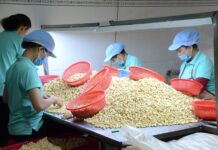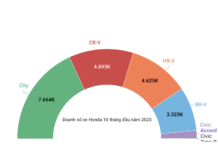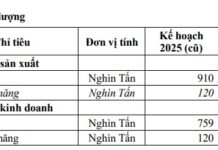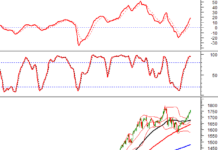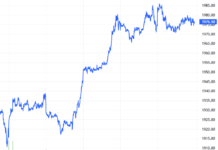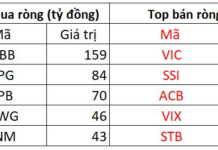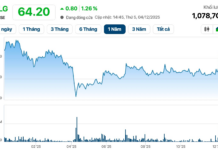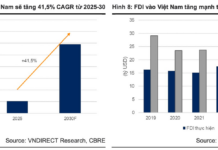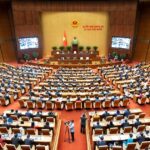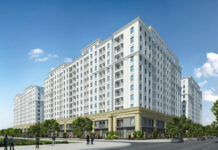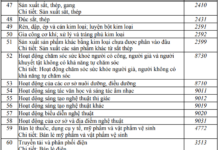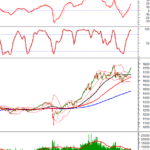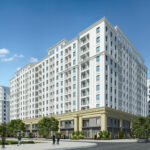
Numerous new urban areas remain deserted despite their well-developed infrastructure. (Illustrative image: Int)
This issue was among the key topics discussed by experts at the seminar titled “Addressing the Shortage of Affordable Housing and Strategies to Attract Residents to New Urban Areas,” organized by TheLEADER Magazine.
Skyrocketing Housing Prices Beyond Affordability
In his opening remarks, Mr. Nguyễn Cao Cương, Editor-in-Chief of TheLEADER, highlighted the perplexing paradoxes in Vietnam’s real estate market. While the supply of projects continues to rise and high-rise buildings sprout up everywhere, genuine demand from residents for affordable housing remains unmet.
Housing prices have surged relentlessly, far exceeding the financial capacity of most urban dwellers. Meanwhile, the segment of affordable housing—where real demand and market exist—is increasingly scarce. Prime Minister has candidly questioned, “Why are housing prices so high and continue to rise?” and directed efforts to boost supply and reduce prices to ensure housing accessibility for all.
“Many areas have turned into ‘dark cities’ or ‘sleeping towns’—with infrastructure but no residents or commercial activities. Is it because housing prices are too high, beyond people’s means? Or is it due to inadequate social infrastructure, lack of employment, poor transportation connectivity, and essential services, deterring people from relocating?” Mr. Nguyễn Cao Cương posed.
At the seminar, Dr. Nguyễn Văn Đính, Vice Chairman of the Vietnam Real Estate Association and Chairman of the Vietnam Real Estate Brokers Association, shared insights. In the first nine months of 2025, the housing supply exceeded 100,000 units, with nearly 40,000 new units in Q3 alone. However, the market still shows a mismatch between supply and demand, particularly in Hanoi and Ho Chi Minh City, where average prices surpass 100 million VND/m².
On the demand side, genuine housing needs remain significant, but market dynamics are driven more by investment capital than by actual home-buying demand. Investment funds are primarily focused on properties with strong rental potential and clear price appreciation prospects.
While the demand for home purchases remains high, actual buying power is constrained by the soaring property prices. This issue warrants further discussion in upcoming conferences.
Transaction data for the first nine months of 2025 reveals a robust absorption rate of nearly 70%, equivalent to approximately 60,000 transactions, doubling the figure from the same period in 2024. This significant improvement signals a resurgence in market activity.
Notably, most projects launched during this period, despite higher prices compared to previous phases, recorded strong absorption rates, with some selling out immediately. This trend indicates a revival in market demand, even amid rising prices. Direct surveys of multiple projects confirm this widespread phenomenon.
Newly launched properties are priced at record highs. Villas, townhouses, and shophouses range from 50 to 400 million VND/m², up 5–10% from previous launches. Most projects follow the trend of “each phase pricier than the last.”
Apartment prices have also surged. In Hanoi, the average price reached about 95 million VND/m², with 43% of new supply exceeding 120 million VND/m²—a recent record high.
In Ho Chi Minh City, the average price stands at 91 million VND/m², closely trailing Hanoi. In the secondary market, prices continue to rise, averaging 10–15% higher than the previous year.
Price increases are widespread: 96.2% in Hanoi, 56.9% in Ho Chi Minh City, and 72.6% in Da Nang, reflecting a national upward trend.
Dr. Nguyễn Văn Đính attributed the persistent high prices to limited supply, supply-demand imbalances, rising project development costs (especially land and capital expenses due to prolonged procedures), market speculation, and manipulation. Meanwhile, the government lacks effective regulatory tools.
Solutions to Lower Housing Prices
Dr. Nguyễn Văn Đính proposed six key solutions:
First, promptly issue detailed guidelines for implementing new laws and resolutions, enabling local officials, especially at the commune level, to execute them confidently.
Second, when applying new land price schedules, adjust financial obligation ratios based on land use purposes to ensure fairness and minimize adverse impacts on residents. Policies detrimental to the market or businesses, such as additional annual land use fees (not clearly defined in the Land Law), should be reconsidered for abolition.
Third, expedite legal clearance for projects, especially social housing and those in major cities, to increase effective market supply.
Fourth, urgently complete the national real estate database, a current bottleneck in market regulation. Establish state-managed real estate trading centers to enhance transparency and trust in transactions.
Fifth, accelerate key transport infrastructure projects like ring roads, metro lines, and highways to expand urban areas, attract investment, and provide more affordable housing options.
Sixth, diversify funding sources for real estate through investment funds, bond issuances, or alternative channels, reducing reliance on bank credit and customer deposits. This will ensure more stable and sustainable project development in the future.
Potential 5-Year Ban on Land Auctions for Defaulting Bidders; Proposal to Increase Deposit to 50%
The Ministry of Justice has proposed stringent penalties for individuals who default on land auction deposits, including a ban on participation in future auctions for a period ranging from 6 months to 5 years. Additionally, defaulters will be required to fully compensate for any damages incurred as a result of their actions.
Groundbreaking Ceremony for Vietnam’s Largest Stadium with Automated Retractable Dome, Led by General Secretary To Lam and Constructed by Vinhomes as General Contractor
On the morning of October 19th, in Hưng Yên, the Ministry of Public Security officially held the groundbreaking ceremony for the PVF Stadium, a 60,000-seat venue featuring cutting-edge technologies introduced to Vietnam for the first time. General Secretary Tô Lâm attended the event and performed the groundbreaking ritual for this nationally symbolic project.
India’s Hottest Sedan: Sold Out in 20 Minutes at Just $65,000 – Only One Unit Available in Vietnam
In Vietnam, the Skoda Octavia RS is a rare gem, with only one unit available, and it has already found its proud owner.
Prime Minister Pham Minh Chinh: Vietnam’s Economy to Surge from $346 Billion in 2020 to $510 Billion by 2025
Prime Minister Pham Minh Chinh announced that Vietnam’s GDP growth is projected to exceed 8% in 2025, with an average growth rate of 6.3% from 2021 to 2025, surpassing the previous term’s 6.2%. The country’s economic scale is expected to expand from $346 billion in 2020 to $510 billion in 2025, propelling Vietnam up five places to the 32nd position globally.

